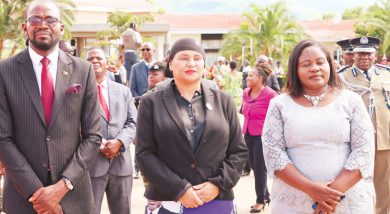Poverty, inequality worsens—report
The 2019 African Economic Outlook Report has painted a gloomy picture of Malawi’s poverty levels, showing that poverty remains widespread at 51.5 percent nationwide as at 2017, up from 50.4 percent in 2010.
Particularly, in rural areas, the report commissioned by the African Development Bank (AfDB) states that poverty stands at 56.6 percent and this extreme poverty is largely because of food insecurity.

Worse still, Malawians’ incomes, according to the report, are very low, with GNI per capita of $360 (about K263 000) in 2016. GNI per capita is the dollar value of a country’s final income in a year, divided by its population and reflects average income of citizens.
Further, the report, states that inequalities are acute and rooted, with a Gini coefficient [measure of statistical dispersion intended to represent the income or wealth distribution of a nation’s residents] of 0.46 in 2010 and .44 in 2014.
It reads: “[In Malawi] Poverty remains widespread at 51.5 percent nationwide in 2017, up from 50.4 percent in 2010, particularly in rural areas [56.6 percent]. Extreme poverty is high, largely because of food insecurity.
“Incomes are very low, with GNI per capita of $360 in 2016. Inequalities are acute and rooted.”
While Africa’s economic growth continues to strengthen, reaching an estimated 3.5 percent in 2018, about the same as in 2017 and up 1.4 percentage points from the 2.1 percent in 2016, the report suggest that such growth is insufficient to make a dent in unemployment and poverty.
Generally, it says growth in Southern Africa is expected to remain moderate in 2019 and 2020 after a modest recovery in 2017 and 2018. Southern Africa’s subdued growth is due mainly to South Africa’s weak development, which affects neighboring countries.
In Malawi: “GDP [gross domestic product] is projected to grow by 4.6 percent in 2018/19 and 5.6 percent in 2019/20. Agricultural improvements, stable macroeconomic fundamentals, the recovery in global commodity prices, and continued foreign direct investment inflows are projected to drive growth.
“Due to high dependence on rain-fed agriculture, weather-related shocks are key risks to export commodities such as tea, tobacco, and other products, as experienced in 2017. The long dry spell in the first half of 2018 and fall armyworm’s infestation reduced the maize output, contributing substantially to GDP deceleration in 2018.”
This outlook corroborates with the 2015 report by Oxfam ‘A dangerous divide: the state of inequality in Malawi’, which warned that If Malawi does not change the trajectory of its growing inequality, 1.5 million more Malawians will fall into poverty by 2020.
It said: “In 2015, 8 million people—50 percent of the country’s population—live in poverty. Yet if inequality continues to rise as it has in recent years, by 2020 1.5 million more Malawians will be poor.
“Even if inequality stays broadly at the level it is now, there will still be 400 000 additional people living in poverty in Malawi by 2020. Unless Malawi acts now to reduce inequality, even rapid economic growth will fail to reduce poverty in the country.”
A National Statistical Office (NSO) Malawi Poverty Estimation Report which covered the period April 2016 to April 2017 stated that moderate poverty levels in the country did not change.
It said ultra-poverty had declined from 24.5 percent to 20.1 percent while overall poverty has slightly increased from 50.7 percent to 51.8 percent, which economists say is an indication that there is still a lot of vulnerability in the country.
Minister of Finance, Economic Planning and Development Goodall Gondwe is on record as having acknowledged the threat that inequality poses to the goal of attaining sustainable development. n





